Benchmark Media Systems AHB2 Amplifiers by Don Shaulis
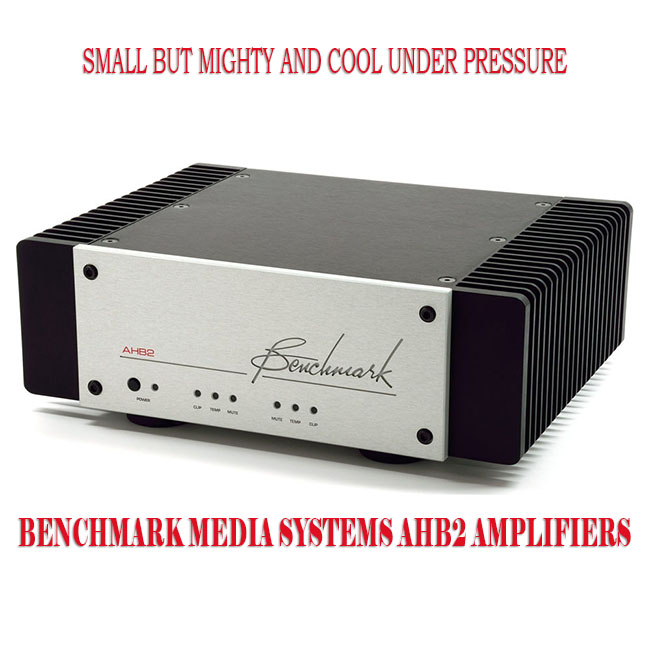
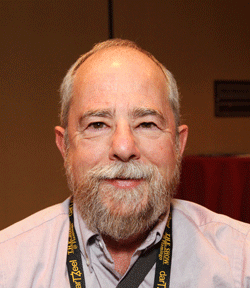 It wasn’t a dark and stormy night when I sat down to start writing this review. It was the first day of summer with a predicted temperature of 104F and many hotter days to follow. My AC was struggling to maintain with little pretense of gaining. Most of the country was under a record-setting heatwave with desperate pleas to conserve energy and protect the power grid. Many record-breaking days followed later in the summer. Is 116oF (46.7oC) hot enough for you?
It wasn’t a dark and stormy night when I sat down to start writing this review. It was the first day of summer with a predicted temperature of 104F and many hotter days to follow. My AC was struggling to maintain with little pretense of gaining. Most of the country was under a record-setting heatwave with desperate pleas to conserve energy and protect the power grid. Many record-breaking days followed later in the summer. Is 116oF (46.7oC) hot enough for you?
It was exactly past experience with these conditions that sent me in search of a powerful but cool-running amplifier for my Sound Lab 545PX loudspeakers (reviewed here). But Sound Labs can present a challenging load. Power without control is like a 60’s muscle car that can’t hang the corners.
I had considered some highly rated Class A/B amplifiers, but price points and heavy weights left me disappointed. I have heard, recently but not the most recent, Class-D amplifiers. There was always some intangible element lost that failed to make them truly engaging. I was consistently amazed that amplifiers that were so dynamic, clean, and detailed could be so uninvolving. They would do everything right except make music. I would cue up a favorite track with anticipation and be let down every time.
I have not heard of any gallium nitride offerings, but I am hesitant because many Class-D amplifiers are from small companies or one-man shops with no guaranteed succession plan. With those amplifiers, there is no extended warranty, and their design “superiority” is temporary, only waiting for the next Class-D “breakthrough.” For those enjoying Class-D amplification, congratulations, you are winners. I do not mean to disparage all Class-D amplifiers, and I have great hope for them in the future, but those I have tried so far were not a great match for the capacitive load of my electrostatic speakers (Quad and Sound Lab).
I was led to Benchmark Media Systems through recommendations from Roger West, the designer of Sound Lab speakers. Praise from a local Sound Lab dealer and a local Sound Lab owner effectively twisted my arm to the point where I yielded to temptation to try the amplifiers with the somewhat strange name. The AHB2 amplifiers bear the initials honoring the company’s founder, Allen H. Burdick.
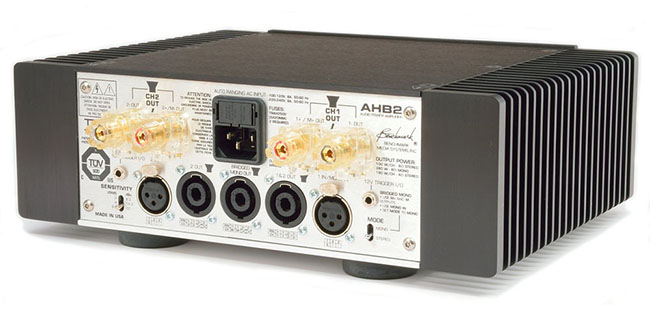
 Benchmark AHB2 amplifiers are Class-H. I had never heard of Class-H before, and my curiosity was piqued. I was impressed by the high power rating paired with claims of power efficiency rivaling Class-D power amplifiers. Another Class-D trait they shared that I found attractive is their size and weight at only 12.5 pounds each despite a very solid build quality. A final checkmark in the plus column completed a trifecta. In a growing field of 5-figure amplifiers, a pair tops out at $5,998. But a pair is not needed for all applications. These are stereo amplifiers with a bridged-mono option which is how I operated them.
Benchmark AHB2 amplifiers are Class-H. I had never heard of Class-H before, and my curiosity was piqued. I was impressed by the high power rating paired with claims of power efficiency rivaling Class-D power amplifiers. Another Class-D trait they shared that I found attractive is their size and weight at only 12.5 pounds each despite a very solid build quality. A final checkmark in the plus column completed a trifecta. In a growing field of 5-figure amplifiers, a pair tops out at $5,998. But a pair is not needed for all applications. These are stereo amplifiers with a bridged-mono option which is how I operated them.
They are built with bipolar output transistors and a unique feed-forward error correction system which is much faster than traditional feedback systems. Feedback loops can only correct errors after they occur. Feed-forward systems correct errors before they reach the output. This system provides the speed and stability needed to keep the amplifier clean over its unusually wide 0.1 Hz to 200 kHz bandwidth. The feed-forward system also keeps the AHB2 clean and stable when driving difficult low-impedance loads.
Class-AB amplifiers can produce “crossover distortion” whenever the push-pull output drivers change from Class-A to Class-B. Precise bias control is usually required to minimize this crossover distortion. Benchmark’s patented THX-AAA™ (Audio Achromatic Amplifier) feed-forward error-correction system has the speed and precision necessary to virtually eliminate all traces of crossover distortion at all impedance levels.
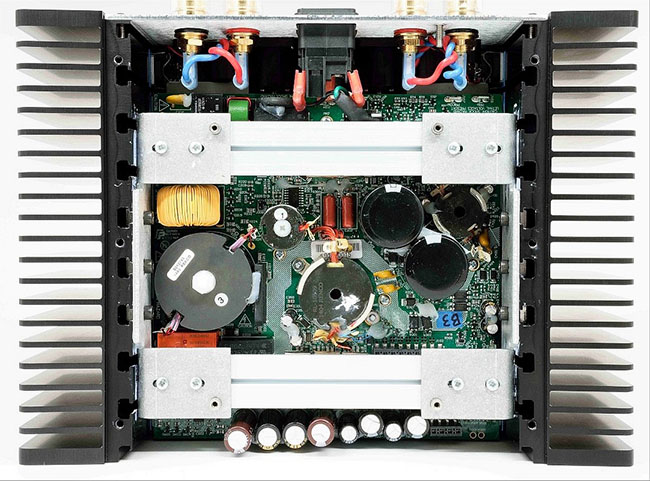
Benchmark claims: “The AHB2 delivers a SNR (Signal to Noise Ratio) that exceeds 132 dB A-weighted. This makes the AHB2 15 to 30 dB quieter than most top-quality power amplifiers. 132 dB is approximately equivalent to the noise performance of a perfect 22-bit digital system.” “The AHB2 drives difficult phase angles and low impedance with ease. Stereo loads as low as 1.4 Ohms can be cleanly driven to full output levels.”
From the online owner’s manual: “Each channel of the AHB2 is equipped with a main amplifier and an ultra-clean low-power auxiliary error-correction amplifier. The main class-AB amplifier provides the bulk of the power while the auxiliary amplifier provides a low-power error-correction signal. These amplifiers are combined to create a near-perfect null of all distortion components.” “The AHB2 is virtually distortion free at low levels, at maximum output, and everywhere in between.”
Since I can’t say it better, from the website Application Notes (emphasis added): “The AHB2 is a linear amplifier, but its efficiency is close to that of a class-D amplifier. The difference is that the AHB2 does not produce the distortion and high levels of ultrasonic noise that are always produced by class-D amplifiers. Class-D performance measurements can be deceiving because the measurements are made with a 20 kHz brick-wall lowpass filter that removes the ultrasonic noise. That test-equipment brick-wall filter is missing when you connect your speakers to a class-D amplifier. The ultrasonic noise and distortion are sent directly to your tweeters where they can be demodulated back into audible frequencies. For this reason, class-D amplifiers do not sound as good as the measurements would suggest.”
 The bridged mono configuration I used is rated to deliver 380wpc into the nominal 8-ohm load of the Sound Labs and 200wpc when the impedance climbs to 16 Ohms. Because Sound Labs are especially revealing, they become magnifying glasses for amplification imperfections. I have read many technical descriptions of equipment design that failed to deliver to my ears. I am not a subscriber to the philosophy that sonic performance improves even into vanishing small distortion levels, especially when speakers and cables can’t make the same claim. However, I am a believer in the potential benefits of avoidance instead of reaction, i.e., feed-forward vs. feedback. The old adage, “an ounce of prevention is worth more than a pound of cure,” applies here.
The bridged mono configuration I used is rated to deliver 380wpc into the nominal 8-ohm load of the Sound Labs and 200wpc when the impedance climbs to 16 Ohms. Because Sound Labs are especially revealing, they become magnifying glasses for amplification imperfections. I have read many technical descriptions of equipment design that failed to deliver to my ears. I am not a subscriber to the philosophy that sonic performance improves even into vanishing small distortion levels, especially when speakers and cables can’t make the same claim. However, I am a believer in the potential benefits of avoidance instead of reaction, i.e., feed-forward vs. feedback. The old adage, “an ounce of prevention is worth more than a pound of cure,” applies here.
Benchmark products are designed for professional applications and continuous operation. They also include features for domestic use. This somewhat hybrid-application design includes NL4 Neutrik speaker outputs in addition to the fully insulated (plastic-covered) binding posts. Shielded posts are my least favorite designs because they only accept small spades or banana plugs. Of course, my recently received Cardas Clear Beyond speaker cables were ordered with 9mm spade terminations for a different amplifier, so I have to use spade-to-banana adapters on the Benchmarks.
The rear panel also includes a mono/stereo switch, a fused IEC power inlet, two 12V bidirectional (in/out) triggers (they respond to 3.3V or higher), and a 3-position sensitivity switch to help insure compatibility with different preamplifier and speaker demands. Each AHB2 came with an instruction manual, power cord, 3′ trigger cable, and two spare fuses. In addition to a small, blue power light, red monitoring lights only come on during a system start-up and shut-down and if there is a problem. Warning lights present for each channel individually include clipping and temperature. There is also a “mute” indication light. AHB2s only accept balanced XLR inputs, a testimony to their professional applications, as does the optional rack mount faceplate. Because AHB2s are magnetically shielded, they will not interfere with sensitive equipment mounted above or below.
I recently found out the hard way there is no industry standard for trigger configuration. The Benchmarks trigger jacks are 1/8″ (3.5 mm) with the tip wired to the 12V trigger I/O bus and the sleeve wired to the chassis ground. There is no connection to the ring. That was not compatible with my Bricasti Design M3 DAC, which reverses the configuration. I also discovered that whichever amplifier of the pair was used for power-on became the “master” and had to also be used to turn off both amplifiers otherwise, they would not sync.
Although designed for 24-hour-a-day operation, the feed-forward error correction circuits in the AHB2 keep it very stable over a wide range of operating temperatures. Full-rated performance is reached in less than one minute. So, there is no reason to keep the AHB2 powered on when not in use. A 40-minute timer can be programmed to shut off the AHB2s if no signal is received. After hours of operation, I found the amplifiers to be barely warm to the touch in a room with air conditioning turned off. Low heat translates to longer component life.
Reliability
 Measures of a company can be found in their longevity and confidence in the build quality of their products. Most Benchmark products are designed and manufactured in Syracuse, NY, where the company has been located for over 36 years. They offer a 30-day risk-free trial but only for USA factory-direct purchases. AHB2 amplifiers come with a one-year warranty. The non-transferable warranty is extended to 5 years in the USA and Canada and two years foreign with proper registration. Online registration is easy, and confirmation is internet fast. I was completing registration for the second amplifier when confirmation for the first was received. Benchmark has posted online the most comprehensive and well-written owner’s manual I have seen. There is lots of technical information for those inclined to delve deeper.
Measures of a company can be found in their longevity and confidence in the build quality of their products. Most Benchmark products are designed and manufactured in Syracuse, NY, where the company has been located for over 36 years. They offer a 30-day risk-free trial but only for USA factory-direct purchases. AHB2 amplifiers come with a one-year warranty. The non-transferable warranty is extended to 5 years in the USA and Canada and two years foreign with proper registration. Online registration is easy, and confirmation is internet fast. I was completing registration for the second amplifier when confirmation for the first was received. Benchmark has posted online the most comprehensive and well-written owner’s manual I have seen. There is lots of technical information for those inclined to delve deeper.
See the online owner’s manual to see the comprehensive set of fault-detection circuits that will activate the “PROTECT” mode to guard against damage to the amplifier or speakers. See the website for an explanation of why the unique AHB2 tightly regulated resonant switching power supply (low voltage, low current, switching frequency above the audio band, and minimized magnetic field) design avoids the problems normally associated with switch-mode power supplies. Benchmark recommends against using power conditioners.
I used the AHB2s in their monoblock configuration. They were positioned on spiked 1.875″ DIY walnut butcher block stands topped with Symposium Svelte Plus platforms and IsoAcoustic OREA footers. Both isolation devices added subtle refinements and liquidity. Knowing full well that any change in cabling, upstream components, or even the tubes in my VAC Renaissance Mk V preamplifier can change the ultimate performance of speakers and amplifiers, I can only comment on the gross characteristics of the AHB2s. In addition, the Sound Labs have three controls (bass, midrange, and brilliance) to further render useless any detailed comments on absolute sonic fidelity.
Straight Wire With Gain
I had never been impressed driving an amplifier from a digital source. I always thought they had great detail but lacked emotion and a rich harmonic structure. That was until I got a Bricasti Design M3 DAC. See Terry London’s excellent review here (Bricasti Design M3 DAC by Terry London). In addition to DAC functions, the M3 can also use analog volume control as a preamplifier for digital inputs. I ordered it with the optional remote and burned it in along with the Benchmarks. I found the M3 to have plenty of drive even when connected to the Benchmarks via 6.5-meter Cardas Clear balanced interconnects. I usually ran the Bricasti in the -10dB to -20dB range into the lowest sensitivity setting on the Benchmarks. The performance was engaging, and I found myself repeating my favorite tracks. I spent many enjoyable hours with the combination, using the M3 as a preamplifier and later as only a DAC. The M3 is also available with an optional network card (Roon Ready plus other options). The M3H model adds front-mounted single-ended and balanced headphone outputs making an M3 or M3H a very versatile and cost-effective unit worthy of serious consideration.
That brings me to my point about the Benchmarks. They are as close to a straight wire with gain as any amplifier I have had in my home. Changes upstream will be reflected downstream. Moving to a Valve Amplification Company (VAC) Renaissance Mk V tube preamplifier changed the characteristics of the Benchmarks slightly. The tubed VAC added more midrange weight when used with input from the Bricasti DAC. I am a big VAC fan. My wintertime amplification for the Sound Labs is a VAC Sigma 170i. But let me be clear, the performance difference between the Bricasti used as a preamplifier and only as a DAC into the Renaissance Mk V did not sound like digital vs analog. It was more solid-state vs. tubes. The Bricasti is very analog sounding with no digital artifacts. The Bricasti provided a slightly sharper definition but there was a richer midrange and harmonic structure with the VAC. Choosing between the two would be personal and also speaker and music-dependent.
Listen Up
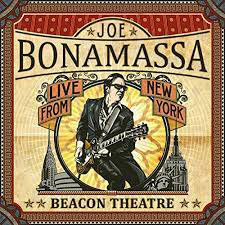 Specifications are like campaign promises. Both lead to unfilled expectations and disappointment. Suffice it to say AHB2s are unique in many ways, but the goal is singular, make great music. A lot of audio equipment has a great “story” but fails the all-critical listening test.
Specifications are like campaign promises. Both lead to unfilled expectations and disappointment. Suffice it to say AHB2s are unique in many ways, but the goal is singular, make great music. A lot of audio equipment has a great “story” but fails the all-critical listening test.
Benchmark avoids massive capacitor storage after the power supply by using power supply regulation that can respond quickly to peak loading while avoiding problems from fluctuations in incoming line voltage. The effectiveness of this was evidenced during the non-stop bass pounding in Joe Bonamassa’s Steal Your Heart Away from the CD “Beacon Theatre – Live From New York” [J&R Adventures ASIN: B008SOS63S]. And then again from the track “Tamacun” from Rodrigo Y Gabriela’s CD Live in Japan [Rubyworks ASIN: B004JUTKSU]. The Benchmarks delivered all the Sound Labs (86dB sensitivity) are capable of with their 32 Hz rating.
 Unintentionally I chose three live recordings for this review. I just naturally gravitate toward them. Sound Labs excel at portraying the full energy and spacious soundstage of a live recording. I make a distinction between performers who might put on a high-energy show that is mostly flash, noise, and fancy clothes and artists who carefully craft their work with no note out of place. I can’t stand sloppy noise or cacophony. There are performers, and then there are artists. Melody Gardot is both. Although most of her music is original, she covers Ain’t No Sunshine on the double CD “My One & Only Thrill + Live in Paris” Ep [ASIN: B00Y3ZZIGE] with a special energy and perfection. The Benchmarks render this recording with great definition and a pace, rhythm, and timing (PRaT) that has proven addictive. I frequently make sure to include this track in any listening session. I never get tired of listening with the Benchmarks.
Unintentionally I chose three live recordings for this review. I just naturally gravitate toward them. Sound Labs excel at portraying the full energy and spacious soundstage of a live recording. I make a distinction between performers who might put on a high-energy show that is mostly flash, noise, and fancy clothes and artists who carefully craft their work with no note out of place. I can’t stand sloppy noise or cacophony. There are performers, and then there are artists. Melody Gardot is both. Although most of her music is original, she covers Ain’t No Sunshine on the double CD “My One & Only Thrill + Live in Paris” Ep [ASIN: B00Y3ZZIGE] with a special energy and perfection. The Benchmarks render this recording with great definition and a pace, rhythm, and timing (PRaT) that has proven addictive. I frequently make sure to include this track in any listening session. I never get tired of listening with the Benchmarks.
Conclusion
Merriam-Webster defines a benchmark as “something that serves as a standard by which others may be measured or judged.” This is what the AHB2s have become for me. The Class-H Benchmarks give me what I wanted from Class-D amplifiers, but with the musical engagement, I found lacking in Class-D. There is the added benefit of a company that has been in business for over 36 years and has a depth of products, and offers an extended warranty.
I normally play in a more expensive sandbox. I initially scoffed at the Benchmark website claims and did not consider trying them because they did not “cost enough.” I thought they might be good for the money but not good enough for me. Shame on me. These little beauties kicked sand in the bullies’ faces and laughed. I experienced equal or better performance to some Class A/B amplifiers without the weight, expense, or heat. Benchmark AHB2s offer high-quality but affordable performance. They will benefit from high-quality associated equipment, and their low heat translates to longer component life and lower energy usage.
The highest compliment I can pay a piece of audio equipment is that it has found a home in my system. A pair of AHB2s are now part of my dedicated summertime amplification for my Sound Lab 545PX loudspeakers. They will share amplification duties with their winter replacement, a VAC Sigma 170i. I do like a change of diet. The Benchmark performance continues to engage me, and the company gives me confidence in long-term support.

don shaulis
Specifications:
Price: $2,999 USA
Output Power at 1 kHz, < 0.00015% THD:
• 100 W/channel into 8 Ohms, both channels driven
• 130 W/channel into 6 Ohms, both channels driven
• 190 W/channel into 4 Ohms, both channels driven
• 240 W/channel into 3 Ohms, both channels driven
• 200 W Bridged Mono into 16 Ohms
• 380 W Bridged Mono into 8 Ohms
• 480 W Bridged Mono into 6 Ohms
SNR & Dynamic Range:
132 dB A-weighted, Stereo Mode
135 dB A-weighted, Mono Mode
130 dB Unweighted, 20 Hz to 20 kHz, Stereo Mode
133 dB Unweighted, 20 Hz to 20 kHz, Mono Mode
Power Consumption: 12W idle, less than 0.5 W standby
Dimensions (WHD):
11.04″ x 3.88″ x 9.34 ” – Including feet and binding posts
11.04″ x 3.47″ x 8.33 ” – Excluding feet and connectors
Rack-mount version height 2RU:
19.00″ x 3.88″x 10.62 “- Including binding posts, handles and removable feet
19.00″ x 3.47″ x 8.33 ” – Excluding feet and connectors
9.09″ rack depth, including binding posts, excluding cables
Address:
Benchmark Media Systems, Inc.
203 East Hampton Place Ste. 2
Syracuse, NY 13206-1633 USA
Phone: 315-437-6300 or 800-262-4675 (800-BNCHMRK)
Fax: 315-437-8119
Website: https://benchmarkmedia.com/
Stereo Times Masthead
Publisher/Founder
Clement Perry
Editor
Dave Thomas
Senior Editors
Frank Alles, Mike Girardi, Key Kim, Russell Lichter, Terry London, Moreno Mitchell, Paul Szabady, Bill Wells, Mike Wright, Stephen Yan, and Rob Dockery
Current Contributors
David Abramson, Tim Barrall, Dave Allison, Ron Cook, Lewis Dardick, Dan Secula, Don Shaulis, Greg Simmons, Eric Teh, Greg Voth, Richard Willie, Ed Van Winkle, and Rob Dockery
Music Reviewers:
Carlos Sanchez, John Jonczyk, John Sprung and Russell Lichter
Site Management Clement Perry
Ad Designer: Martin Perry



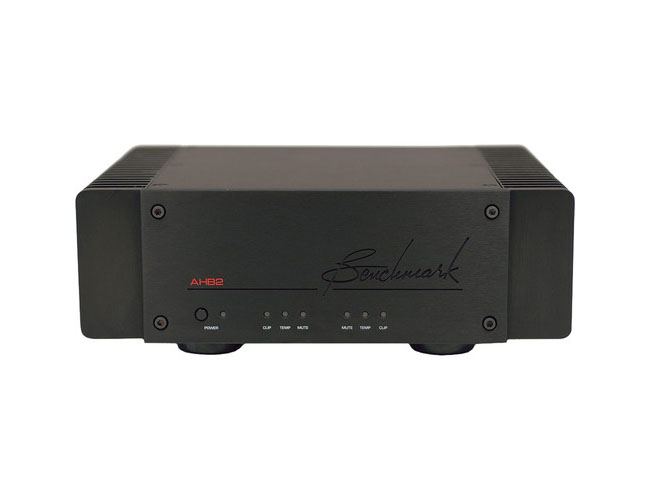



Be the first to comment on: Benchmark Media Systems AHB2 Amplifiers by Don Shaulis